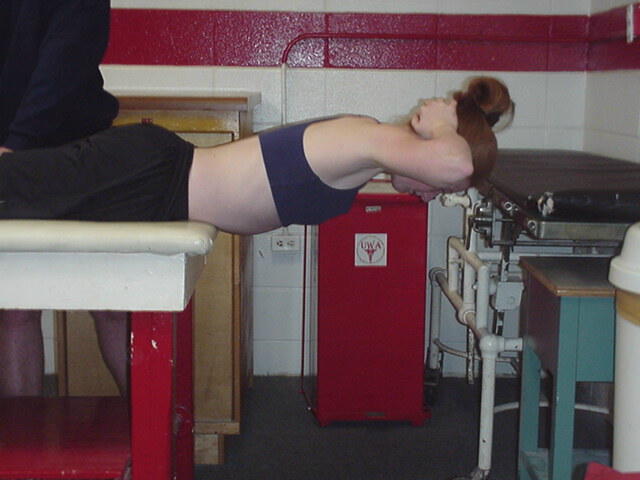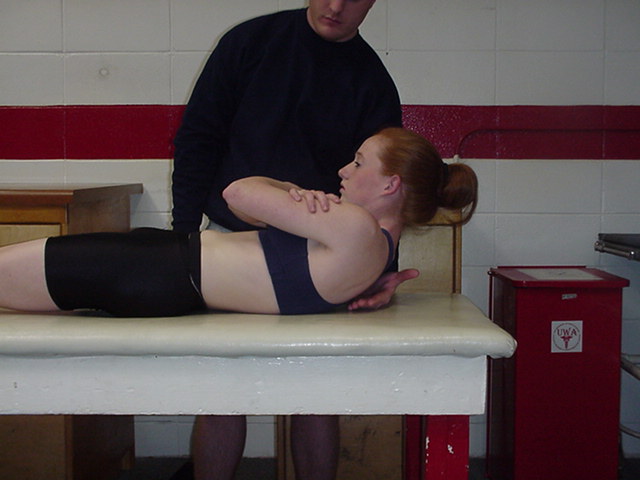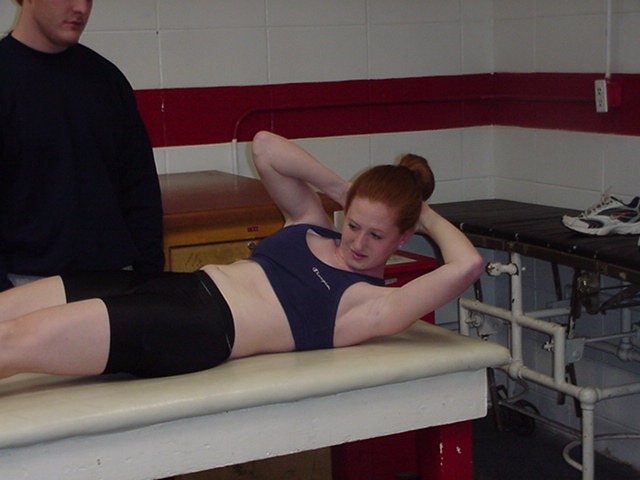Manual Muscle
Testing of the Lumbar & Thoracic Spine
| Lumbar Extension |
Patient lies prone with hands clasped behind head.
Examiner stands so as to stabilize the lower extremities just above the
ankles if the patient has normal hip strength. Patient extends
lumbar spine until thorax is raised above table level. |
 |
| Thoracic Extension |
The patient lies prone with head and upper trunk extending
off the table from about the nipple line. The examiner stands so that he
can stabilize the lower limbs at the ankles. The patient then extends
thoracic spine to the horizontal. |
 |
| Trunk Flexion |
The patient lies supine with hands clasped behind head.
Examiner stands at the side of the table level with the patient's chest,
so he can determine if patient's scapulae clear the table. The patient
flexes trunk through range of motion. |
 |
| Trunk Rotation |
Patient is supine with hands clasped behind head. The
examiner stands at patient's waist level. Patient flexes trunk and rotates
to one side. |
 |
| Pelvic Elevation |
Patient is supine with hip and lumbar spine in extension.
Patient grasps edge of table for stabilization during resistance. The
examiner stands at foot of table facing the patient. Examiner grasps test
limb with both hands and pulls evenly and smoothly. The patient hikes that
pelvis, approximating the pelvic rim to the inferior margin of the rib
cage. |
 |
Adapted from:
Hislop, Helen J. & Montgomery, Jaqueline with
contributor Barbara Connelly.
Daniels and
Worthingham's muscle testing: techniques of manual examination., 6th
edition, 1995.



